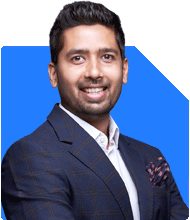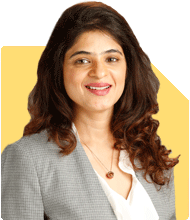Moneywize |181 Answers |Ask -Follow
Financial Planner - Answered on Jan 24, 2024

I am 40 years old I have good investments in real estate, 2 life insurance, 4 FDs, six MFs, what do you suggest as an retirement strategy. where should I invest now? I have 26 lakh to invest. What are the best options for me? Could you please suggest
Review your current portfolio:
• Assess the performance and risk profile of your existing investments.
• Consider rebalancing your portfolio to ensure it aligns with your current financial goals and risk tolerance.
Diversify further:
While you already have a diversified portfolio, you may want to explore other asset classes like international equities, gold, or alternative investments to enhance diversification.
Consider Tax-efficient Investments:
Evaluate tax-saving investment options like Equity-Linked Saving Schemes (ELSS) or the Public Provident Fund (PPF) that offer tax benefits along with potential returns.
Systematic Investment Plans (SIPs):
Consider investing in equity mutual funds through Systematic Investment Plans (SIPs). SIPs allow you to invest a fixed amount regularly, promoting disciplined investing and taking advantage of rupee cost averaging.
NPS (National Pension System):
NPS is a long-term retirement-focused investment product. It offers a mix of equity, fixed deposits, liquid funds, and government funds. Contributions to NPS are eligible for tax deductions.
Annuities:
You might consider allocating a portion of your portfolio to annuities, which provide a regular income stream during retirement. However, do thorough research and consider the terms and conditions before opting for an annuity.
Emergency Fund:
Ensure you have an adequate emergency fund that covers 3-6 months of living expenses. This fund should be easily accessible and provide a financial cushion in case of unexpected expenses.
Review Insurance Coverage:
Ensure your life insurance coverage is adequate and aligns with your current needs. Consider reviewing the policies to make any necessary adjustments.
Real Estate:
Since you already have investments in real estate, evaluate whether it makes sense to continue investing in this asset class or if adjustments are needed based on your overall portfolio allocation.
Consult a Financial Advisor:
Consider consulting with a financial advisor who can provide personalized advice based on your specific financial situation, goals, and risk tolerance.
Remember that investment decisions should be made based on a careful consideration of your financial goals and risk tolerance. It's advisable to periodically review your portfolio and make adjustments as needed.
You may like to see similar questions and answers below
Ramalingam Kalirajan |8459 Answers |Ask -Follow
Mutual Funds, Financial Planning Expert - Answered on Apr 20, 2024
Kirtan A Shah |77 Answers |Ask -Follow
MF Expert, Financial Planner - Answered on Nov 01, 2023
Ramalingam Kalirajan |8459 Answers |Ask -Follow
Mutual Funds, Financial Planning Expert - Answered on May 09, 2024
Ramalingam Kalirajan |8459 Answers |Ask -Follow
Mutual Funds, Financial Planning Expert - Answered on Jan 29, 2025
Prof Suvasish Mukhopadhyay |651 Answers |Ask -Follow
Career Counsellor - Answered on May 16, 2025
Prof Suvasish Mukhopadhyay |651 Answers |Ask -Follow
Career Counsellor - Answered on May 16, 2025
Radheshyam Zanwar |1634 Answers |Ask -Follow
MHT-CET, IIT-JEE, NEET-UG Expert - Answered on May 16, 2025
Radheshyam Zanwar |1634 Answers |Ask -Follow
MHT-CET, IIT-JEE, NEET-UG Expert - Answered on May 16, 2025
Ashwini Dasgupta |107 Answers |Ask -Follow
Personality Development Expert, Career Coach - Answered on May 16, 2025
Ramalingam Kalirajan |8459 Answers |Ask -Follow
Mutual Funds, Financial Planning Expert - Answered on May 16, 2025
Ramalingam Kalirajan |8459 Answers |Ask -Follow
Mutual Funds, Financial Planning Expert - Answered on May 16, 2025
Milind Vadjikar |1236 Answers |Ask -Follow
Insurance, Stocks, MF, PF Expert - Answered on May 16, 2025
Milind Vadjikar |1236 Answers |Ask -Follow
Insurance, Stocks, MF, PF Expert - Answered on May 16, 2025
Ravi Mittal |589 Answers |Ask -Follow
Dating, Relationships Expert - Answered on May 16, 2025




























